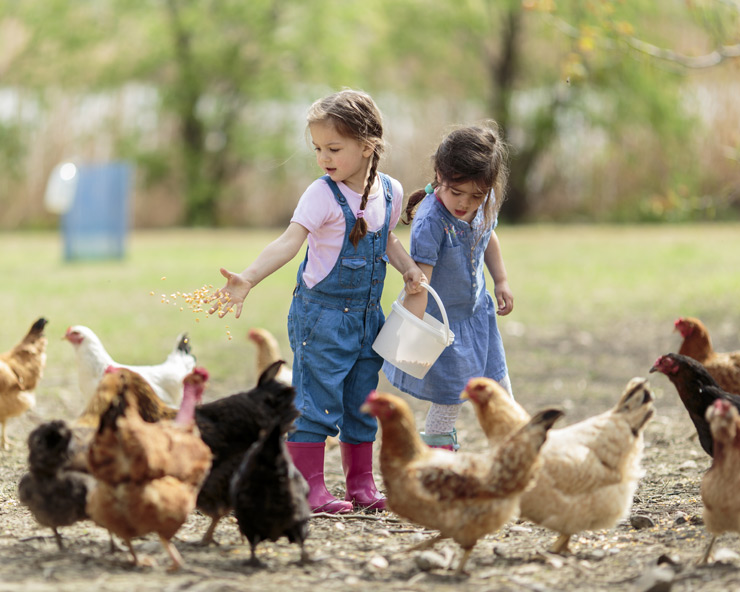Have you ever wondered why it isn’t the best idea to sneak a little cookie dough out of the bowl while making a batch? Why do diners put an asterisk by over-easy or sunny side up eggs? Or if the trend of drinking unpasteurized milk is all that safe?
All of these foods have the possibility of carrying bacteria that can be harmful to us. These microscopic bugs are easily killed if heated to the proper temperature. Salmonella is one of these bugs. Many different strains of Salmonella bacteria are found in the gut of both humans and animals.
How is Salmonella spread between animals?
Salmonella is mostly spread through the fecal-oral route from one animal to another. If an animal is shedding large numbers of Salmonella in their feces and defecates in a food trough or a water tub, other animals can ingest the bacteria when they eat or drink. They may become infected if they consume high enough numbers or if their immune system is suppressed for some reason. Animals infected with Salmonella often don’t appear to be sick.
Should I be worried about Salmonella?
It is estimated that about 1.35 million Salmonella infections happen yearly in the United States. Food is usually the source. Salmonella most often affects young children, people with a weakened immune system, and people over 65. Most often, people get the disease from eating improperly cooked food or improperly pasteurized dairy products. People also can get Salmonella from touching infected animals, their feces, or their environment. For those with regular livestock contact who routinely work with animals, awareness of Salmonella is important.
What does Salmonella look like in people?
Salmonella can cause diarrhea, fever, and stomach cramps in people. Most cases are mild, and our bodies can fight off the bacteria. However, sometimes it can lead to a clinic visit or, in some serious cases, hospitalization. Talk to your doctor if you think you might be sick with Salmonella.
How to protect yourself
- Wash your hands using soap, if possible, especially after contact with pets, farm animals, or after having been to the toilet.
- Make sure food is properly cooked and still hot when served.
- Avoid raw milk and products made from raw milk. Drink only pasteurized or boiled milk.
- Wash fruits and vegetables carefully, especially if they are eaten raw.


Now that we know about the importance of the microbiome and biodiversity, I wish we could talk more about balance rather than coming down on pathogens that we will never totally eliminate. Our modern swine herds all harbor some intestinal Salmonella. In Denmark, hogs sent to slaughter are unloaded right off the truck from the farm rather than put in a hotel with hogs from other producers before they are slaughtered so strains are not mixed. Incubation period can be very short, so if we are going to be looking at farm of origin of pathogens we need to be fair. Yes, your message is correct to be careful with washing and pastuerization, but do not give the impression that you can stamp some of these organisms out.